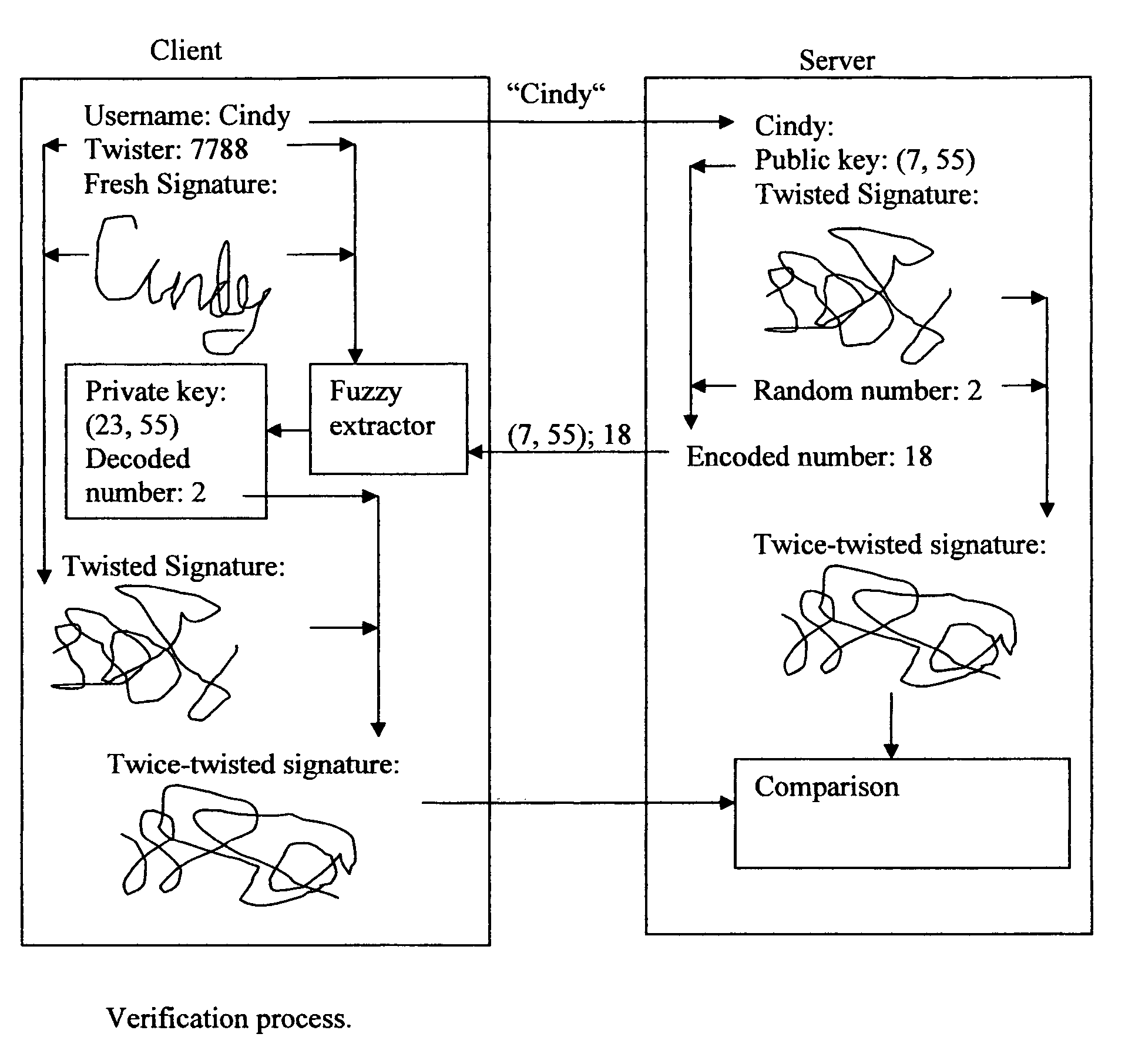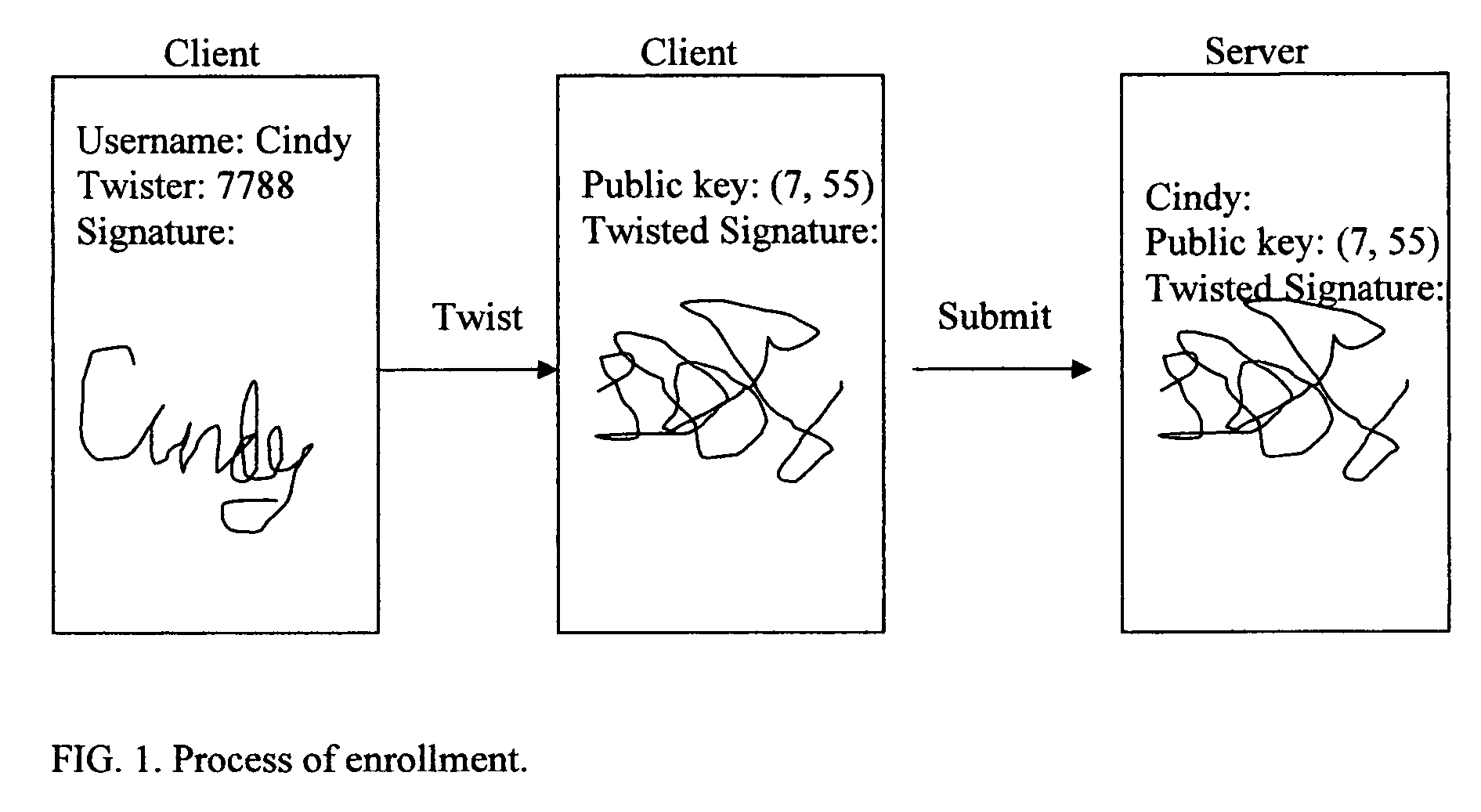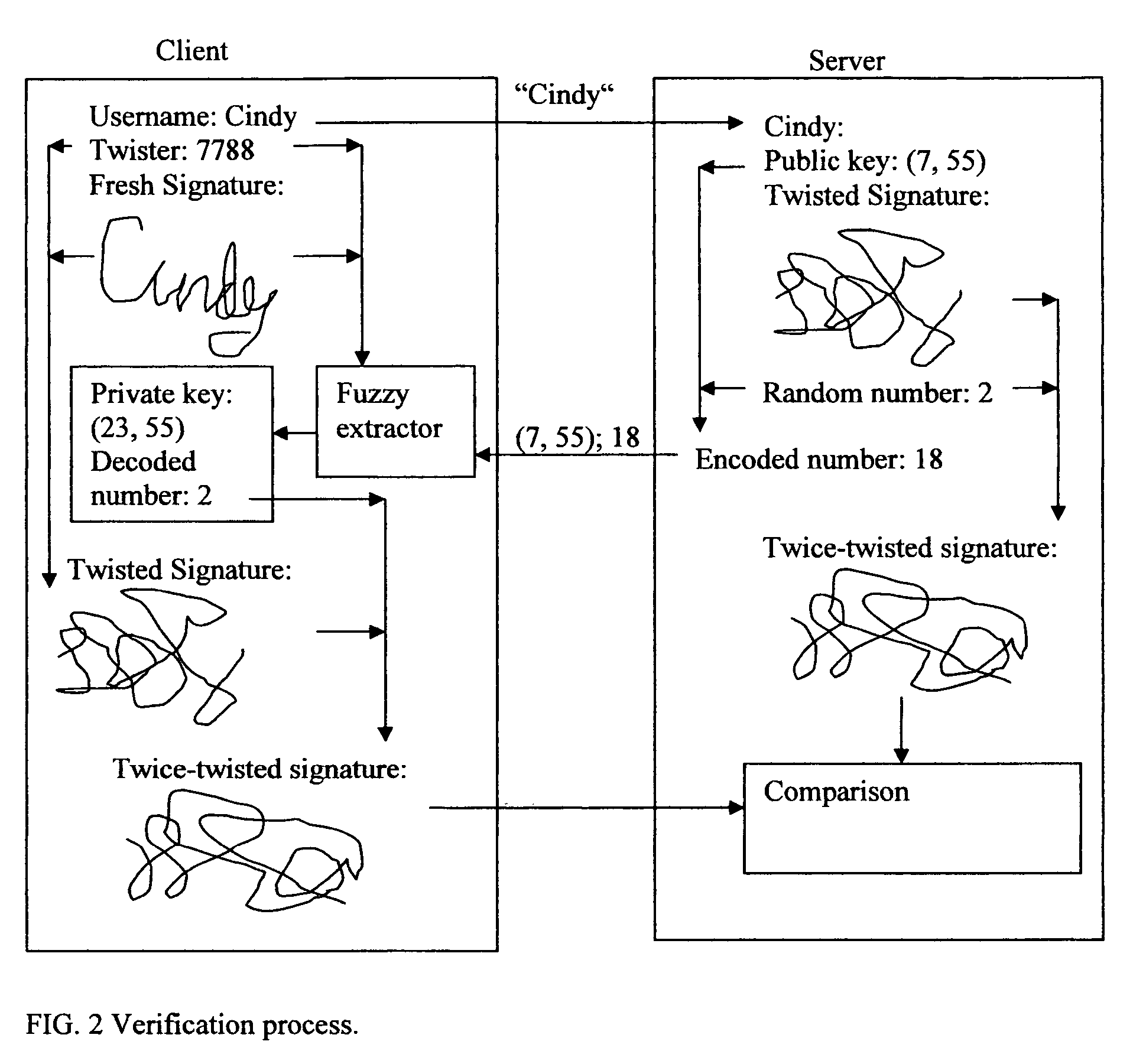Secure biometric authentication scheme
a biometric authentication and authentication scheme technology, applied in the field of secure clientserver communication, can solve the problems of rsa anonymous communication, the inability to calculate the corresponding private key, and the possibility of breaking, so as to improve the privacy of users and the security required of servers is less crucial
- Summary
- Abstract
- Description
- Claims
- Application Information
AI Technical Summary
Benefits of technology
Problems solved by technology
Method used
Image
Examples
Embodiment Construction
[0030]The present invention will now be described more fully using some specific examples of the implementation, see also U.S. patent application Ser. No. 10 / 725,116, filed on Dec. 2, 2003, and entitled TWISTED SIGNATURE, by Victor Gorelik. The present invention may, however, be embodied in many different forms and should not be construed as limited to the provided examples.
[0031]In particular, the present invention may be embodied as systems (apparatus), methods and / or computer program products, or as an embodiment combining software and hardware aspects.
[0032]As mentioned above, the present invention is valid for different types of biometric data like voice, fingerprints, retina scan and so on. For purposes of illustration only, the handwriting signature is chosen.
[0033]FIG. 1 illustrates the process of enrollment.
[0034]The first step is to extract arrays of values from a real biometric characteristic on the client side. For example, a user signs an on-line form using a computer m...
PUM
 Login to View More
Login to View More Abstract
Description
Claims
Application Information
 Login to View More
Login to View More - R&D
- Intellectual Property
- Life Sciences
- Materials
- Tech Scout
- Unparalleled Data Quality
- Higher Quality Content
- 60% Fewer Hallucinations
Browse by: Latest US Patents, China's latest patents, Technical Efficacy Thesaurus, Application Domain, Technology Topic, Popular Technical Reports.
© 2025 PatSnap. All rights reserved.Legal|Privacy policy|Modern Slavery Act Transparency Statement|Sitemap|About US| Contact US: help@patsnap.com



